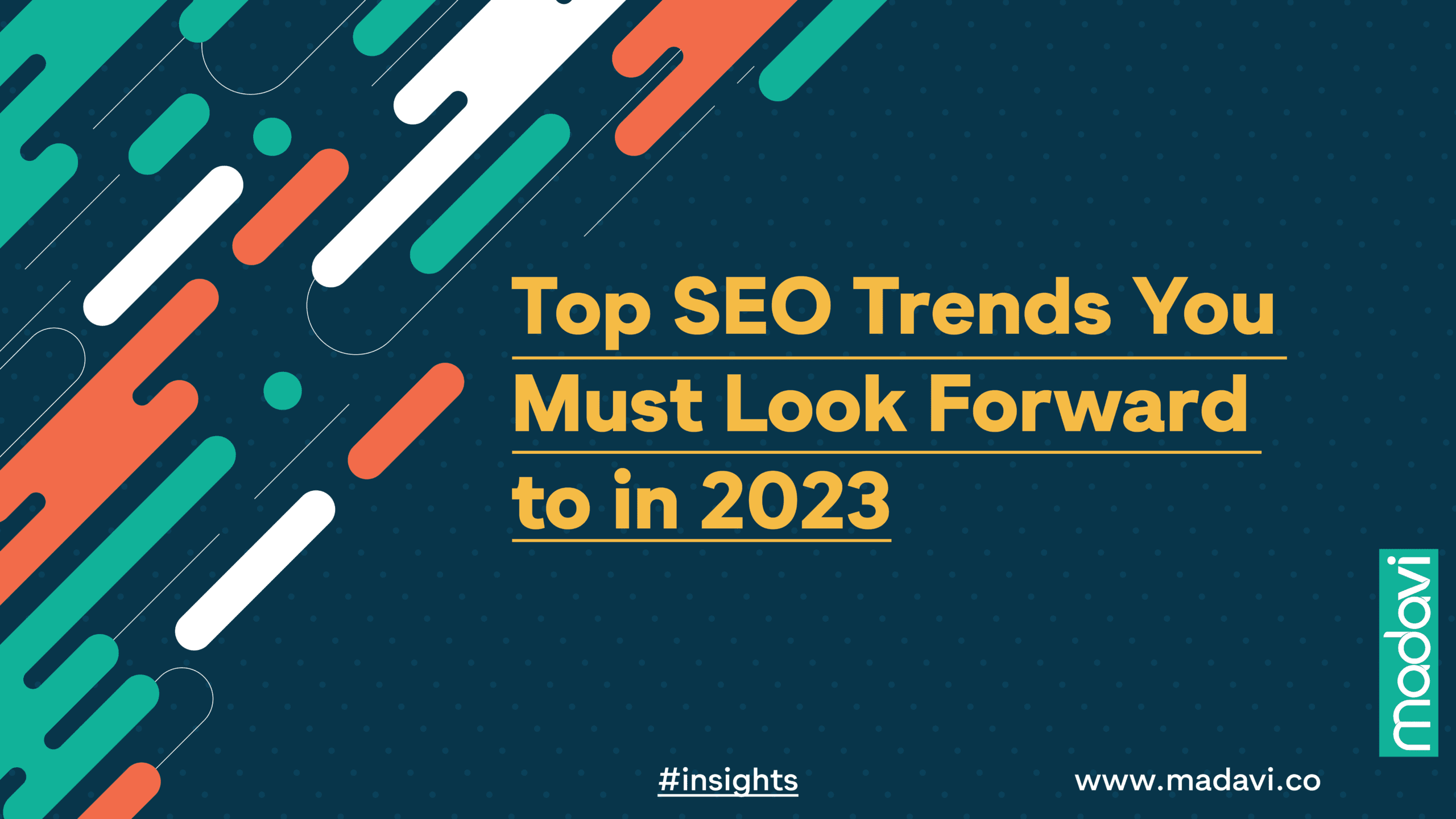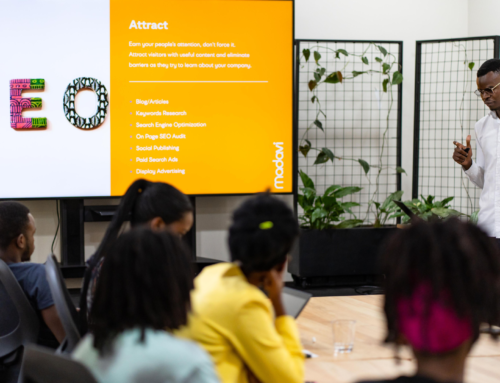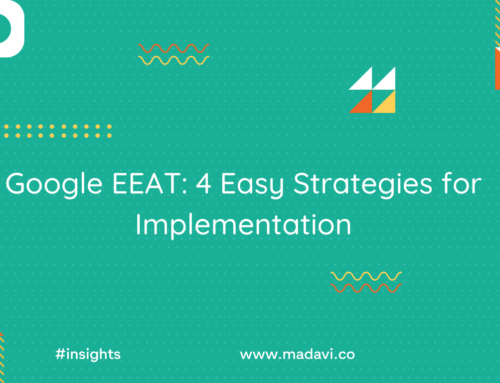Table of Contents
- Top SEO Trends You Must Look Forward to in 2023
- Top SEO Trends You Should Look Forward to in 2023
- 1- First-hand Experience on a Topic, The New “E” in EEAT
- 2- Audience-Targeted, Not Traffic-Targeted Audience
- 3- More Focus on Author Authority
- 4- Focus on Satisfying and Helpful Content
- 5- A.I Content & Content Writing Software
- 6- SEO Automation
- 7- Changes to CTRs by SERP Positions
- 8- Product-Page SEO
- 9- SEO Competitor Analysis
- 10- Less Crawl Frequency
- 11- Image SEO Revitalized
- 12- Fast-Loading, High-Performing Websites
- Conclusion
Top SEO Trends You Must Look Forward to in 2023
SEO, Search Engine Optimization, refers to optimizing your website according to the search engine’s algorithms for the crawlers to crawl quickly and represent on the first page of the search results. This can be done by incorporating targeted keywords in your content, getting backlinks from do-follow and high domain authority sites, leveraging site optimizing tools, adding optimized images, and much more.
In today’s world with cut-throat competition, SEO has become a necessity and is no longer an option. Indeed, it takes time to drive results, but it marks one of the best marketing strategies for repetitive long-run returns.
The new year is here, and so are we. This article brings you the top trends you must look forward to master your brand SEO game.
Top SEO Trends You Should Look Forward to in 2023
In order to promote brand visibility, and awareness, improve conversion, enjoy higher returns on investments, and outgrow competition, your site should be thoroughly optimized. Here are a few trends you can look up while optimizing the site and content in 2023.
1- First-hand Experience on a Topic, The New “E” in EEAT
Google’s popular EAT Algorithms (Expertise, Authority, and Trust) recently got an additional “E,” Experience in their latest update of Dec 2022. This means Google will now consider the author’s experience while evaluating the quality of content. With this update, Google needs to see that an author or a creator has first-hand experience with the topic they have written about. This leads to a narrower selection of topics to focus on.
2- Audience-Targeted, Not Traffic-Targeted Audience
Several brands use to execute illegal and malpractices to drive traffic to their site organically. For instance, if their business sells fashion apparel for women, they write and post content related to fashion apparel for men, driving traffic but not ethically. But now, you’ll get penalized if you post irrelevant content on your website.
3- More Focus on Author Authority
Artificial Intelligence has taken the content industry by a toll lately. With numerous AI software available in the market, anyone can repurpose the content, which initially affects the quality and authenticity of the curated content. To avoid the rise of auto-generated content, Google emphasizes more on experience.
To establish the author’s experience, you must include author bios, create author pages establishing the overall experience of the author, and link your author’s social media handles to prove authenticity and legitimacy.
4- Focus on Satisfying and Helpful Content
Google launched a helpful content update in August 2022, affecting content creation in 2023. With the update, Google urged creators and authors to curate content that can be immensely helpful. Creating helpful content doesn’t mean you can compromise on the quality of the content. Authors are now expected to create both high-quality and helpful content.
The helpful content should be written for humans, not for crawlers or problem-solver for the target audience, and relevant to the primary subject. It should be backed by supporting statistics to establish authority.
5- A.I Content & Content Writing Software
Despite Google’s algorithm updates focusing on auto-generated content, AI content will only expel exponentially, and ChatGPT is one of the best examples.
AI-leveraged content writing software is gaining popularity because it fastens and simplifies content creation, which is time-consuming and challenging. It simplifies content workflow and amplifies productivity.
While AI-generated content is negatively highlighted, necessary measures can still create original, unbiased, and quality content if followed. The moral of the story is that AI-generated content can be ethically used, being societal limitations.
6- SEO Automation
The world is automating, and so are the concept and tasks of Search Engine Optimization. Many tools are available in the market that automates SEO functions and offers you some extra time to focus on other crucial business functions.
The SEO Automation tools include keyword research tools, website graders, site auditing & monitoring platforms, analytics tool, and many more. With the help of all such tools, you can quicken and simplify SEO’s time-consuming yet extremely vital functions.
7- Changes to CTRs by SERP Positions
Google’s primary objective is to offer maximum user satisfaction and comfort while searching for the products, services, or information of their choice. The search engine giant now offers endless scrolling on smartphones and desktops, mainly impacting the CTRs as visitors can easily navigate multiple search results pages.
Aim for the first position on the SERPs. Ensure that your meta titles and descriptions are well-optimized. Leverage SCHEMA markups to make your content more engaging and clickable in the SERPs.
8- Product-Page SEO
Usually, brands optimize their long-form content, completely overlooking product-page optimization. If you are an eCommerce store owner, optimizing your products-page becomes inevitable as the product page will rank higher on SERPs when your target audience searches for it.
Try incorporating drop-down menus, FAQs, customer reviews, and other relevant content in your product page’s optimization.
9- SEO Competitor Analysis
SEO can prove quick and easy if you learn from others’ mistakes. Analyze your competitors and see what they are doing and avoiding. Target the keywords they are leveraging and ranking higher on SERPs for.
There is plenty of SEO Competitor Analysis software available in the market that you can leverage to understand and outgrow your competitors better.
10- Less Crawl Frequency
Google has recently set climate goals, including operating on carbon-free energy by 2023. In order to achieve that goal, Google has been considering reducing the frequency with which it crawls web pages.
Reducing crawling aids in conserving computing resources and is one of the most superficial changes Google can make with its sustainability initiatives.
But, unfortunately, reduced crawl rates are more likely to impact refresh crawls instead of crawls that discover new content. That means it may take longer for Google to take notice of the new changes we make on the websites.
11- Image SEO Revitalized
Image optimization is equally important as content optimization because better-optimized images can fetch traffic from Google’s image search results. You can provide opportunities to include relevant, focused keywords and semantically-related terms into the content via alt text.
12- Fast-Loading, High-Performing Websites
Google emphasizes more on high-performing and fast-loading websites in its ranking algorithm. A high-performing and fast-loading website can drive conversions faster than slow and buggy sites even for visitors and your target audience.
Ensure seamless and fast navigation, mobile-friendly and responsive, and quick checkouts to offer a hassle-free shopping experience to your customers. If your site takes forever to load, customers will go to your competitor’s site and buy from there.
Conclusion
In 2023, consider the trends mentioned above, as they are all directly designed per Google’s algorithm updates, values, and goals. Furthermore, make sure to use SEO tools to quickly and effectively meet Google’s exponentially increasing standards for content.
With Madavi, you can keep all your SEO worries at bay. The SEO professionals at Madavi will optimize your site to drive massive traffic and better quality leads organically. Plus, we thoroughly understand and respect the algorithm alterations, helping us ensure your ethical growth!







